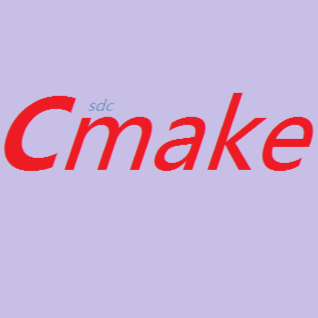

The cache can be edited with a graphical editor, which is shipped with CMake.Ĭomplicated directory hierarchies and applications that rely on several libraries are well supported by CMake. These locations are stored in a cache, which can then be tailored before generating the target build files.
#CMAKE C 17 CODE#
However, the users aren't protected in any way from removing the original source code folder.ĬMake can locate system-wide and user-specified executables, files, and libraries. Placing the compiler outputs outside of the source tree keeps the tree separate from the build files, ensuring that removing a build directory will not remove the source files. This enables multiple builds from the same source tree and cross-compilation. The commands add_compile_options, include_directories, link_directories, link_libraries that were at the core of CMake 2 should now be replaced by target-specific commands.Ī key feature is the ability to place compiler outputs (such as object files) outside of the source tree. Experts now advise to avoid variables in favor of targets and properties.

It has been described as the beginning of "Modern CMake". Additional features were created when VTK transitioned to CMake for its build environment and for supporting ParaView. CMake was first implemented in 2000 and further developed in 2001.Ĭontinued development and improvements were fueled by the incorporation of CMake into developers’ own systems, including the VXL Project, the CABLE features added by Brad King, and GE Corporate R&D for support of DART. At Kitware, Bill Hoffman blended components of pcmaker with his own ideas, striving to mimic the functionality of Unix configure scripts. It was partially inspired by pcmaker, which was made by Ken Martin and other developers to support the Visualization Toolkit (VTK). The project is funded by the United States National Library of Medicine as part of the Visible Human Project.
#CMAKE C 17 REGISTRATION#
To be informed about new articles on I Programmer, sign up for our weekly newsletter, subscribe to the RSS feed and follow us on Twitter, Facebook or Linkedin.CMake development began in 1999 in response to the need for a cross-platform build environment for the Insight Segmentation and Registration Toolkit. In the new release, you can now open a single file or folder without using CMake, so that if all you want to do is to read some C++ code in CLion, you can work without CMake. This release also sees the first changes in the move to decoupling the CMake project model from CLion. CLion will use CMake, make, GCC/G++ compilers and debugger from WSL, and will build and run your binary there.
#CMAKE C 17 WINDOWS#
You can connect to the toolchains by first starting WSL on the Windows machine, then connecting to the toolchain from CLion. The number of toolchains supported on Windows has been improved by adding WSL support.
#CMAKE C 17 WINDOWS 10#
WSL makes it possible to compile, run, and debug Linux binaries while working on your Windows 10 machine. The support for WSL (Windows Subsystem for Linux) has also been improved. Code folding of the control statement has also been added. Unwrap/remove code blocks is a feature that safely unwraps if, else, for, while, do.while and for control statements. The breadcrumbs show information such as namespaces, classes, structures, functions, and lambdas to make the code easier to read and to navigate through. The editor is another area that has seen improvements, with the addition of Breadcrumbs for C/C++, and unwrap.remove code blocks.īreadcrumbs are small markers at the bottom of the editor that are designed to make it easier to navigate around code. While the developers are considering some alternatives to the current language engine in CLion, and expect to make changes in some 2018.x versions later in the year, the current version adds support for C++17 structured bindings, as well as support for C++17 if and switch with initializers. The developers say they've worked in several directions that may lead to better language support in the long run, including both accuracy and performance. The main improvements to the new release are in the area of support for C++. While C and C++ are the main languages CLion is designed for, the new release does come with bundled support for Objective-C and Objective-C++, as well as updated plug-ins for Rust and Fortran. Its advantages include a smart editor, code quality assurance, automated refactorings, and integration with the CMake build system. More generally, this version shows the start of the general decoupling of the CMake project model from CLion.ĬLion is an IDE from JetBrains that you can use to develop in C and C++ on Linux, OS X and Windows.

There's improved support for C++17 in CLion 2018.1 as well as WSL support and the addition of CMake Install.


 0 kommentar(er)
0 kommentar(er)
